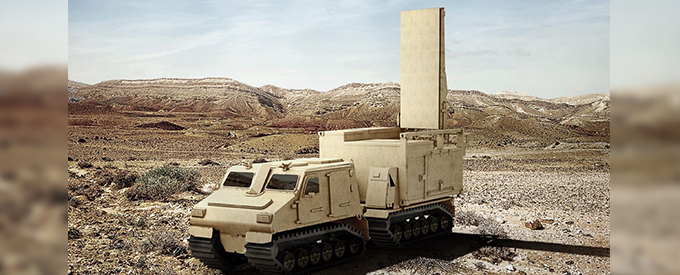2020-04-01
Saab to Upgrade UK’s Arthur Systems
Saab recently received an order from the United Kingdom’s Ministry of Defence for a mid-life extension and support for the Arthur weapon locating system.
Arthur protects forces and civilians by providing warning of incoming fire and is also used for tasks including counterbattery missions and fire control. The mid-life extension will represent a programme of obsolescence management by the insertion of modern technology, ensuring that this counter-fire capability can be sustained on a cost-effective basis through to its extended out-of-service date. The order value is 482 million SEK and was booked in Q4 2019.
“Our Arthur systems have contributed to protecting UK forces for more than 15 years. We look forward to continuing to strengthen the UK’s weapon locating capability for years to come,” said Anders Carp, Senior Vice President and Head of Saab’s business area Surveillance.
Deliveries of the mid-life extension will take place between 2022 and 2023. The support contract covers 2020-2026. Saab will carry out the work in Gothenburg, Sweden, with support also taking place at 5th Regiment Royal Artillery’s Marne Barracks in Catterick, UK. Arthur is known in the UK as the Mobile Artillery Monitoring Battlefield (MAMBA) radar.
Arthur is a highly mobile weapon locating system, tactically deployed close to the forward line of own troops. Within the battlefield sectors or areas of interest it will rapidly detect and track artillery projectiles and calculate points of origin and points of impact. Based on these calculations, priorities are made and directions are provided for effective counter-battery fire. In fire control mode, Arthur will track the projectiles of own fire and extrapolate the points of impact. In sense & warn mode, extrapolation of points of impact of incoming fire will trigger timely warning to own troops.
Operational Advantages
Arthur enables accurate counter-battery fire within seconds and covers a distance of 60 km and can report >100 targets/min. It also provides adjustment of own fire and warning of incoming fire.
Offers battle-proven high reliability and maintainability: In eliminating or greatly reducing the availability and fire support effect of an adversary’s artillery, it is forced from a state of acting into one of reacting.
Accurate counter-battery fire: The Arthur radar continuously searches the horizon and immediately tracks projectiles early in the trajectory. Gun, mortar or rocket projectiles are automatically classified and correctly associated to batteries. Within seconds, Arthur will send a call for fire message to the artillery command and control system, effectively coordinating precise counter-battery fire.
More than 100 targets/min within 60KM: Arthur has an instrumented range of 20, 30, 40 or 60 km. The sustained maximum capacity for detection, tracking, classification and impact calculation is well over 100 targets per minute.
Adjustment of own fire: The Arthur fire control mode is used to register the points of impact of own artillery fire. The mode is selected manually or automatically by an incoming data message from the command and control system. Arthur tracks and calculates mean positions of own points of impact and automatically sends a message back containing precise correction data for fire adjustment.
Warning of incoming fire: Arthur extrapolates – in real time – the trajectory of all incoming projectiles to determine the point of impact. Should the calculated impact reside within defined Critical Friendly Zones (CFZ), Arthur will trigger timely warning. Thereby, both force and asset protection is assured.
High reliability and maintainability: Launched in 1999, Arthur is operational in 12 countries, among them Norway, Sweden, the Czech Republic, South Korea, Spain, Italy, Greece and the UK. The system has been proven in wartime service with the British forces in the second Gulf War in 2003 and served with British and other forces in operations in Afghanistan and Iraq, where it was used in 24/7 combat operations.
High-mobility vehicle: Arthur is designed with unique transportability and ease of operation in mind. The entire system is installed in an ISO-cornered shelter weighing only 4,500 kg. This means it can be carried by any single cross-country truck or tracked vehicle with a five-tonne payload capacity. It also implies high speed for on-road transport as well as high off road mobility.
The system can be airlifted by a single C-130 using standard equipment for container handling. With larger aircraft, such as the IL-76, C-17 or A400M, all versions can be transported as drive-on/drive-off cargo.
Designed for a high degree of automation, two operators/soldiers can perform both deployment and teardown of Arthur in less than two minutes.
Superior system survivability: Arthur will itself be a high-priority target. Survival limits the useful operating time at any single deployment site to 10-30 minutes, depending on the threat level. Deploying in only two minutes maximises the useful operating time at a given physical location without jeopardising system survival. The antenna aperture consists of 48 slotted ridge waveguides, implementing a built-in functional redundancy. Should the antenna be partially hit by small-arms fire or shrapnel, remaining waveguides will stay functional and offer true functional degradation.
The system has low infrared (IR) and electronic warfare (EW) signatures, which makes it harder to detect and hit with thermal or radar-seeking weapons.
Integrated logistics support: ILS is an important part of the system delivery and will form the basis for future maintenance. Saab ILS experts have experience in tailoring ILS deliveries together with customers worldwide.
Reference Text/Photo:


No Comments